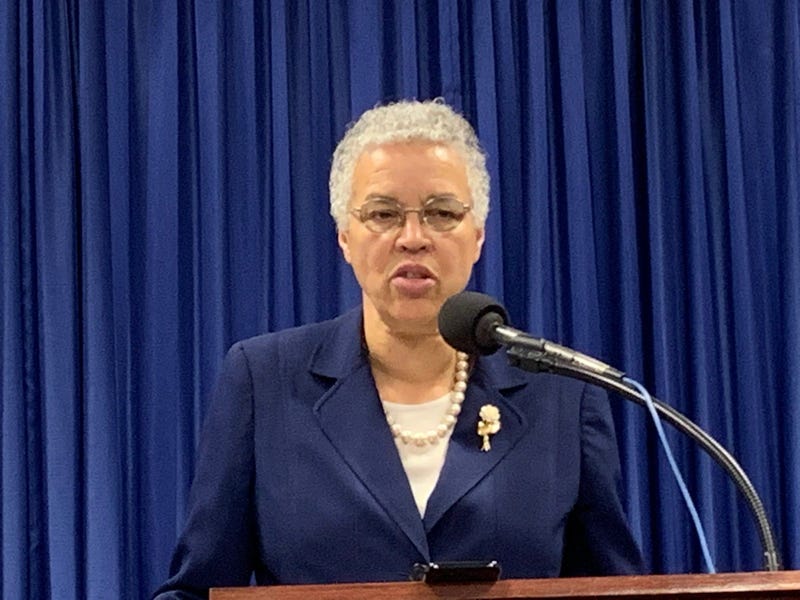
CHICAGO (WBBM NEWSRADIO) -- Cook County unveiled Monday its new Clean Energy Plan as it commemorated the 25th anniversary of the deadly heat wave in Chicago. And the head of the County Board said the timing was intentional.
County Board President Toni Preckwinkle said climate change was one reason for the 1995 heat wave that left 739 people dead in Chicago. But, lack of services and resources in black and brown neighborhoods was a major factor for the high number of deaths.
“While climate change and its effects, including flooding, heat waves, worsening air quality and greater threat of new diseases, is a threat to us all, under-resourced communities and communities of color are disproportionately at risk due to existing social, economic and health inequities,” Preckwinkle said. “Where you live directly impacts exposure to flooding, local areas of hotter air, poor air and water quality, and ultimately your lifespan.”
Fast forward to COVID 19. Preckwinkle said the same neighborhoods that suffered most during the deadly heat wave of 1995 are the same ones hardest hit by the coronavirus. And the economic disinvestment and what’s often called environmental racism was present then and is present now.
"The same communities that suffered disproportionately in 1995 continue to suffer today. They are the ones that experience more significant exposure to environmental pollution, such as the burning of fossil fuels, making these residents more susceptible to chronic respiratory [illness> and heart disease," Preckwinkle said.
Preckwinkle said the county’s new Clean Energy Plan can improve health in such areas.
"Fighting climate change is the right thing to do for the environment and for the people of Cook County and for racial equity," she said.
RELATED: Preckwinkle Distributes CARES Act Funds To Suburbs | Preckwinkle Hires New Director Of Equity And Inclusion | Chicago Opens More Cooling Centers As Heat Persists
Deborah Stone, the county’s chief sustainability officer, said the county plans to fight climate change by achieving a 45-percent reduction in carbon emissions and using 100-percent renewable electricity by 2030 and making county-owned facilities carbon neutral by 2050.
"That means generating or procuring low carbon resources, including wind energy, solar energy, and geothermal and the like," Stone said.
County Energy Manager Jamie Meyers said some of the work’s already underway.
"We are currently preparing a request for proposal of installing solar energy systems at the Skokie and Markham courthouses, as well as the Cicero records center," he said.
The officials said the improvement will also save money, by reducing the county’s utility bills, and they said, that will more than recoup the costs of the new equipment.
